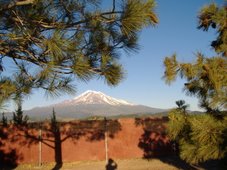Interesting changes in American investment strategies. This represents a Long Term shift in strategy. Stock Market prices vs Live Stock prices... I think the mandated/imposed rules and regulations coming soon will affect all but the largest companies. The following brief report I found worthy of sharing. I have noticed my investors seeking a place to put capital to work. Someplace safe and highly likely to produce income as well as be a safe store of wealth. People will need to eat.... I hope you enjoy this "find"
Regards, AJ
...............................................................................................
Strategic Investments in Farmland
Article by Ryland Moore. According to a report issued by the USDA’s Agricultural Statistics Service at the end of February this year, the United States had a reduction of over 3 million acres in producing farmland in 2012. Drought was the largest driver behind the reduction in productive agriculture, coupled with a renewed development cycle to meet the returning demand for housing after the residential real estate and stock market crash. In addition, Yale Economics professor and respected co-founder of the Case-Shiller Home Price Index, Robert Shiller, stated that farm and ranchland was a strong buy along with stocks as a good future investment.
While many states declined in number of farmland acres in production in 2012, Oregon was a bright spot with a net increase in over 200,000 acres in farm production. The increase is likely due to continued high prices in the commodities market, combined with ending cycles under the Conservation Reserve Program (CRP) converting rested land back to agriculture. States like Oregon that did not have drought conditions in 2012 benefited from a low supply in the crop markets and allowed farmers and ranchers to obtain premium prices for crops; 2011 already proved to be one of the best years in Oregon’s farming history with $1.03 billion in net farm income. Expected later this year, 2012 figures look to be even better.
With less acreage under production in the US, possible drought conditions across the Midwest and Texas, and an increasing global population expected to grow by another 2 billion people in the next 20 years, demand and need for basic commodities such as wheat, alfalfa and corn will continue. We expect farmland prices in Oregon to continue on an upward trend as they have done since 2010. Demand for farmland is still high. With tighter yields in the bond market, stocks priced for perfection, and the market at all-time highs, many investors will look to diversify instead of sitting on cash. Forward-thinking Buyers are looking to areas where drought has typically not been a problem in the past.
Looking forward, conditions are unfavorable for the Midwest again in the 2013 season. USDA Chief Economist Joseph Glauber, who recently testified to the U.S. Senate Committee on Agriculture, Nutrition and Forestry, stated, “that about 60 percent of U.S. winter wheat production was under drought conditions.” Similarly, Scott Yates, director of communications for the Washington Grain Commission has learned of several reports indicating the lack of moisture has already stunted the 2013 Midwestern wheat crop to the degree that it will not be a quality crop. "Once again the Northwest, for the most part, is sitting in the catbird seat when it comes to the wheat crop in the nation," Yates said. "We have adequate moisture, we haven't had any arctic express come down, we've got snow cover over some of the land."
Now more than ever, investing in farm and ranchland continues to be an excellent way to diversify your portfolio, receive tax benefits, and afford recreational opportunities that other types of real estate simple cannot offer. For more information on the Oregon market, please contact Ryland Moore of Live Water Properties at ryland@livewaterproperties.com or 971.645.1515.
Friday, June 28, 2013
Subscribe to:
Post Comments (Atom)



No comments:
Post a Comment